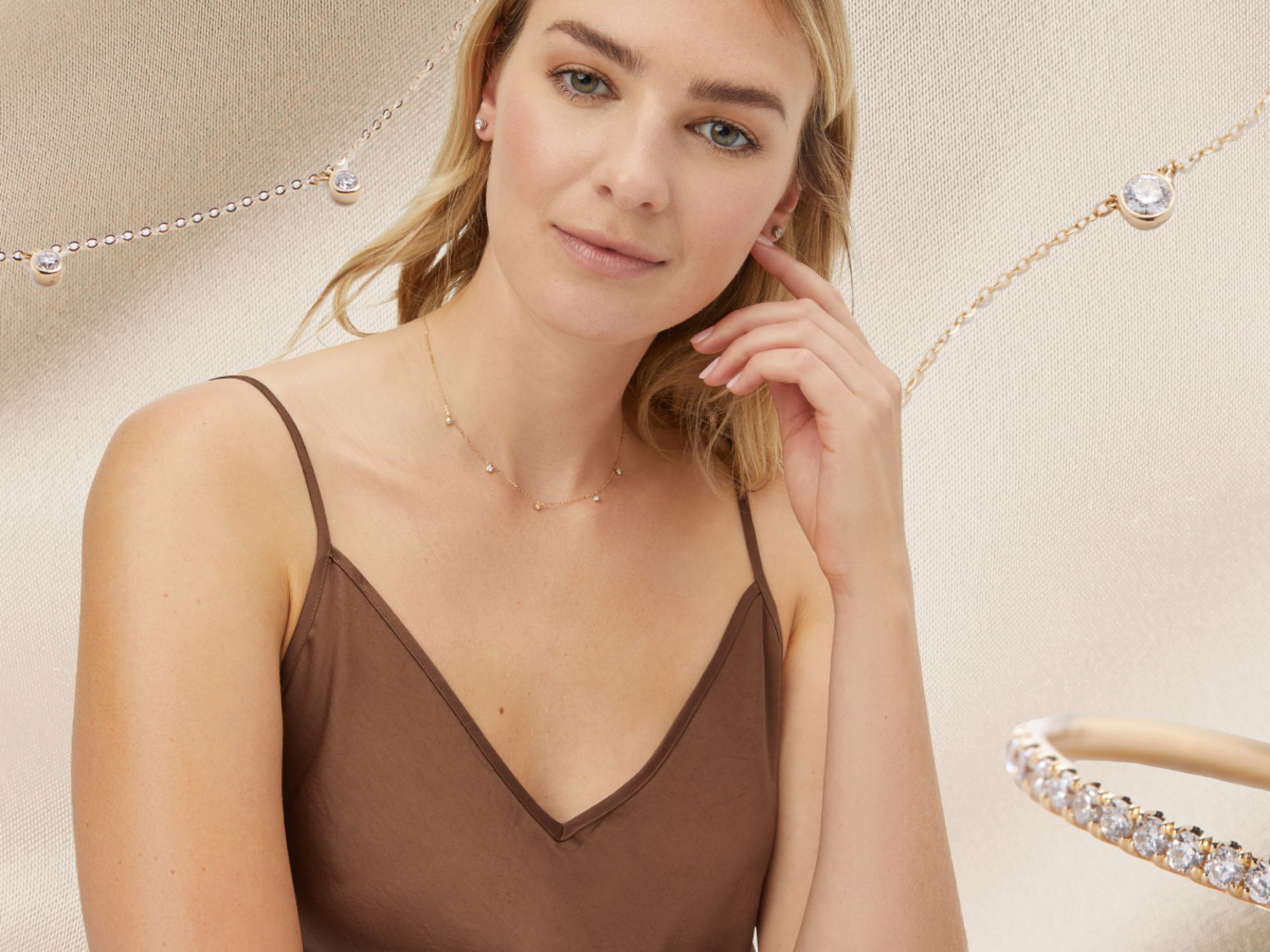Are Lab-Grown Diamonds Real Diamonds? Absolutely.
Also known as cultured or lab-created diamonds, lab-grown diamonds have the same physical, chemical, and optical properties as mined diamonds. Even professionals in the diamond industry have a hard time distinguishing between the two. To the naked eye, lab-grown diamonds and natural diamonds are practically identical.
The key difference is the way both types of diamonds are sourced. Lab-grown diamonds are created in a controlled laboratory environment using innovative technology that mimics the natural diamond growing process. Mined diamonds, on the other hand, grow naturally below the Earth’s surface.
Both differ physically and chemically from diamond simulants like cubic zirconia and moissanite, which are not real diamonds.
How Are Lab-Grown Diamonds Formed?
In nature, diamonds grew in the Earth’s mantle over billions of years. Intense heat and pressure caused carbon molecules to rearrange at an atomic level into an ultra-hard solid form. Major geological events like volcanic eruptions then pushed those diamonds closer to the Earth’s surface, making them accessible to miners.
The lab-growing process mimics the heat and pressure found in nature but takes place over days or weeks — instead of eons. Labs most commonly create diamonds using a process called Chemical Vapor Deposition (CVD).
CVD diamonds start with a very slim slice of a diamond called a seed. The seed is placed in a vacuum chamber where it’s heated to 800 degrees celsius. Carbon-rich gasses in the chamber then break down, and the resulting pure carbon molecules bond to the diamond seed, gradually crystallizing.
This technically advanced process took decades to develop. The first lab-grown diamond was produced in the 1950s, but gemstone-quality diamonds couldn’t be grown until the early 2000s.

Why Buy Lab-Grown Diamonds?
Lab-grown diamonds offer a variety of advantages over mined diamonds.
1 / Sustainability
Diamond mining is notoriously hard on the environment. It requires large quantities of fossil fuel and creates mountains of waste that can damage the areas surrounding the mines. Growing diamonds in a lab is a far more eco-friendly practice that entails significantly less energy use. Because they’re created in a controlled environment, lab-grown diamonds may also be less damaging to ecosystems, wildlife, and human populations than their mined counterparts.
2/ Price
Because of their shorter supply chain, lab-grown diamonds retail for less than mined diamonds of equivalent quality. While mined diamonds and lab-grown diamonds undergo the same cutting, polishing, and inspection process, the mining process adds many extra steps — and costs — upfront. Those extra production phases mean a higher price tag for consumers. Producing lab-grown diamonds is more direct, resulting in exquisite quality for less.
3/ Cut
Cut is what gives diamonds their shimmer and brilliance. In fact, it’s probably the most important of the four Cs when it comes to the overall beauty and value of a gemstone. Since lab-grown diamonds are created in a controlled environment, their raw form lacks the irregularities, flaws, and mineral inclusions seen in mined, uncut diamonds. That means fewer constraints and compromises during the cutting process, resulting in finished gems that usually perform better optically than mined, cut diamonds of the same size.
4/ Size
A lower price point makes bigger, better lab-grown diamonds accessible. A high-quality mined diamond of 1.45 carats, color G, and clarity VS1 typically costs the same as a 2-carat lab-grown diamond with the same color and clarity. Lab-grown diamonds are worth considering if you prefer large, dramatic stones.
Lab-Grown Diamonds Vs. Mined Diamonds: Which Is Right For You?
Ultimately, buying diamonds is a deeply personal decision. Some people are drawn to the billions of years of natural history attached to each mined diamond. Others are attracted to the sustainability and guaranteed ethical sourcing of lab-grown diamonds. The most important thing to consider when buying diamonds is not the origin or the price, but what they mean to you.
